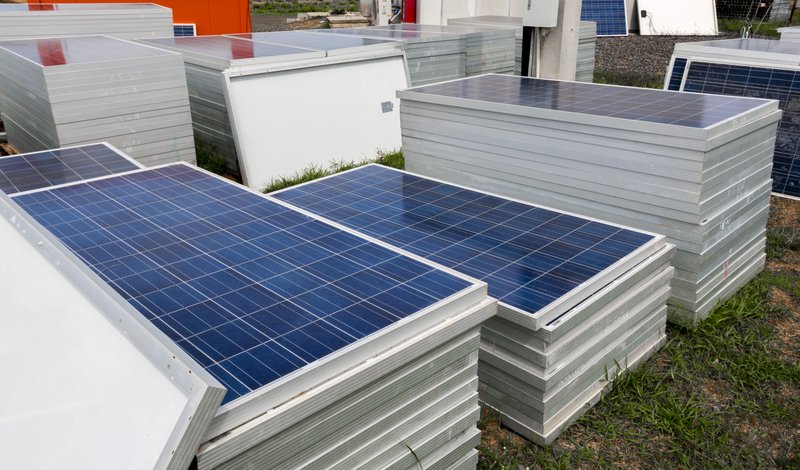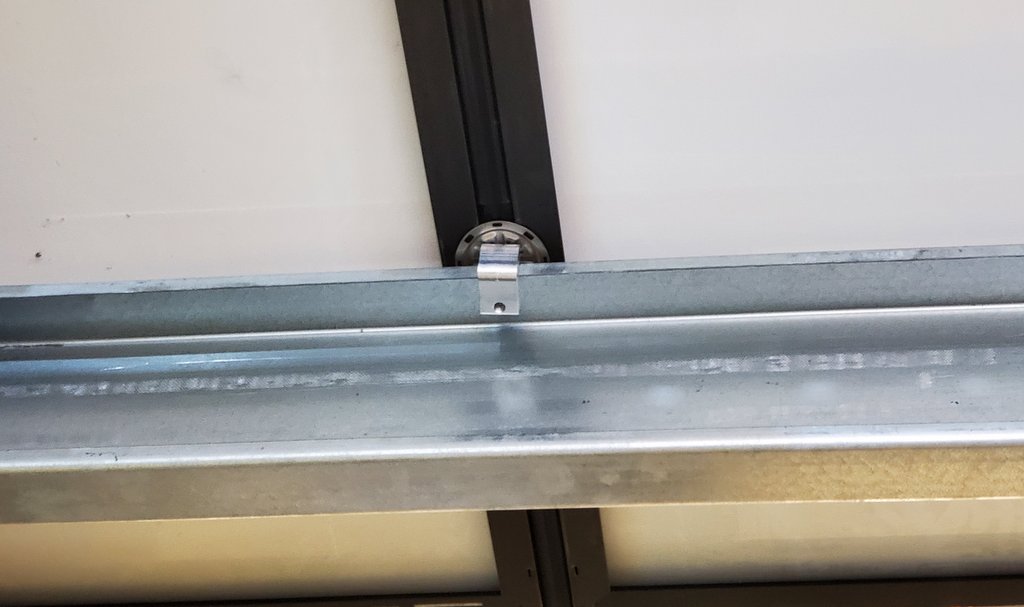Construction begins on JFK Terminal One solar project

Construction crews have broken ground on a massive solar project at New York City’s John F. Kennedy International Airport.
Amid Climate Week NYC, the Port Authority of New York and New Jersey and the New Terminal One consortium that was selected to design, build and operate the new terminal at JFK announced that construction has begun on a 13,000-panel solar array on the terminal’s roof that will cover an area the size of 6.5 football fields. The Terminal One solar array will be the largest in New York City and the largest at any airport terminal in the country.
“When the new terminal is complete, it will be the largest terminal at Kennedy Airport, so we are particularly pleased to incorporate on-site power using a green energy source into the design of the terminal,” said Port Authority Executive Director Rick Cotton. “We have made sustainability a major priority at our facilities, and this massive solar array is a unique and innovative solution that reduces our carbon footprint and continues our march towards net zero.”
The 6.63 MW of solar array on the terminal’s roof is part of a 12 MW microgrid that will distribute electric energy from solar, fuel cells and batteries through a localized and self-contained energy system that can operate independently from or connected to the main power grid. This microgrid will also include 3.84 MW of fuel cells and 1.5 MW / 3.34 MWh of battery energy storage, all of which will be located in four clusters of electrical generation infrastructure strategically placed around the new terminal to create a single smart, resilient energy system. It will provide power for the terminal’s daily operations.
“This construction milestone in our redevelopment of John F. Kennedy International Airport represents more than progress at one of our facilities because its success will set an industry example for others,” said Port Authority Chairman Kevin O’Toole. “On-site green energy development such as the country’s largest airport solar array will reduce the generation of greenhouse gases that cause climate change at the New Terminal One.”
As an all-international terminal, the New Terminal One is a key component of the Port Authority’s $19 billion transformation of JFK into a world-class global gateway that will include two new terminals with evocative public art and locally inspired retail options, two expanded and modernized terminals and an entirely new, efficient roadway network when complete.
“Breaking ground on this first-of-its-kind microgrid solution is a major and exciting milestone in New Terminal One’s commitment to reducing our carbon footprint and setting a new industry standard on sustainability,” said Jennifer Aument, CEO of New Terminal One. “This resilient and efficient energy solution will simultaneously enable us to decarbonize, drive innovation, and deliver lasting benefits to both our passengers and our community.”
The microgrid will recover heat from the fuel cells to generate chilled water and hot water for the terminal. Its capacity generates enough electricity to power half of the everyday operations of the terminal. AlphaStruxure is financing the microgrid project through an Energy as a Service (EaaS) contract, which is a long-term agreement ensuring predictable operating costs and guaranteed performance without upfront capital expenditures to neither the Port Authority nor New Terminal One. AlphaStruxure is responsible for the construction, operation and maintenance of the microgrid over the life of the contract.
“When it comes to energy, airports are facing a perfect storm: More passengers, more electrification, more outages, and more power capacity bumping up against aging energy infrastructure that’s less and less able to keep up,” said Juan Macias, CEO of AlphaStruxure. “JFK’s New Terminal One is building sustainable energy infrastructure at the speed and scale necessary to stay ahead of these challenges. We’re thrilled to provide an integrated microgrid solution via Energy as a Service that not only provides resilience for New Terminal One passengers, but advances the city, state and Port Authority’s ambitious decarbonization goals.”
The clean technology aligns with the Port Authority’s aggressive sustainability goals, which includes reaching net-zero emissions by 2050 and requiring greener operations by its business partners, such as airport terminal operators and airlines. The Port Authority, in partnership with the New York Power Authority, also is constructing a 12 MW solar canopy at JFK’s long-term parking lot 9 that will consist of 7.5 MW of battery storage for airport peak energy use and a 6 MW community solar generation facility, as well as provide covered parking for 3,000 vehicles. Other solar projects at Port Authority facilities include a 5 MW solar parking canopy at Newark Liberty International Airport, a 1.5 MW rooftop solar array on LaGuardia Airport’s Terminal B garage, and a 600 kW solar roof on a PATH warehouse rooftop.
The New Terminal One microgrid will be especially resilient due to its novel design of clustered architecture consisting of four so-called power islands. Each power island functions as a hyper-localized, self-sufficient energy system with sources of generation, storage, and advanced automation and control. When one island is taken down for routine maintenance, the other three can remain online. The microgrid’s ability to provide half of the terminal’s own electrical needs helps to mitigate impact of a regional grid blackout on airport operations, which could lead to substantial delays for airline passengers.
The New Terminal One rooftop solar canopy will be the largest such solar array at any U.S. airport, providing a valuable case study for both the aviation and solar energy industries due to federal requirements to mitigate glare. The unique design of the clustered power islands also may serve as a case study for other airports with limited space or busy operations but want to add scalable on-site green power generation.
Project partners include AlphaStruxure’s two parent companies, Schneider Electric and Carlyle. Schneider is delivering leading microgrid technology, controls, software, and services, while Carlyle is providing financing for the microgrid. Other project partners include Burns, serving as owner’s engineer on the project; E-J Electric Installation Co. as the design-builder; Vanderweil Engineers as the engineer of record; BOND Civil & Utility Construction as the mechanical contractor; and HyAxiom, a Doosan company, as the provider of fuel cells and their maintenance.
Construction of the microgrid will support almost 100 local jobs, through AlphaStruxure’s design-builder partner E-J Electric Installation Co. Headquartered in Queens, E-J Electric will source all labor through local unions affiliated with the Building and Construction Trades Council of Greater New York.





Comments are closed here.